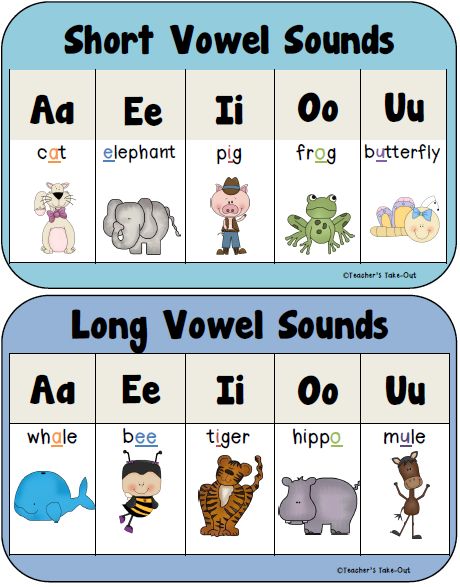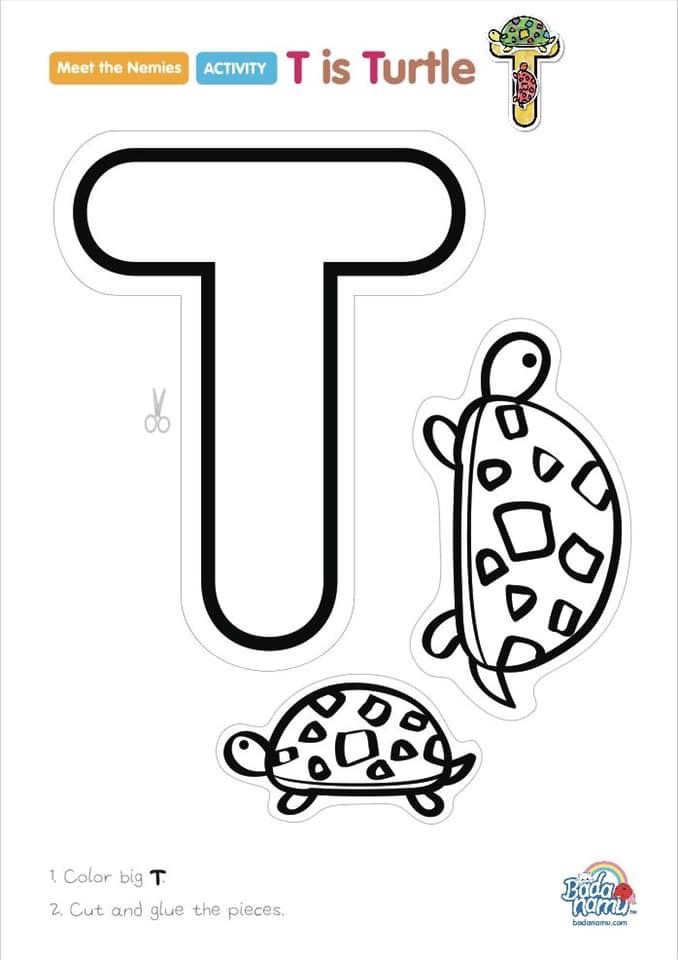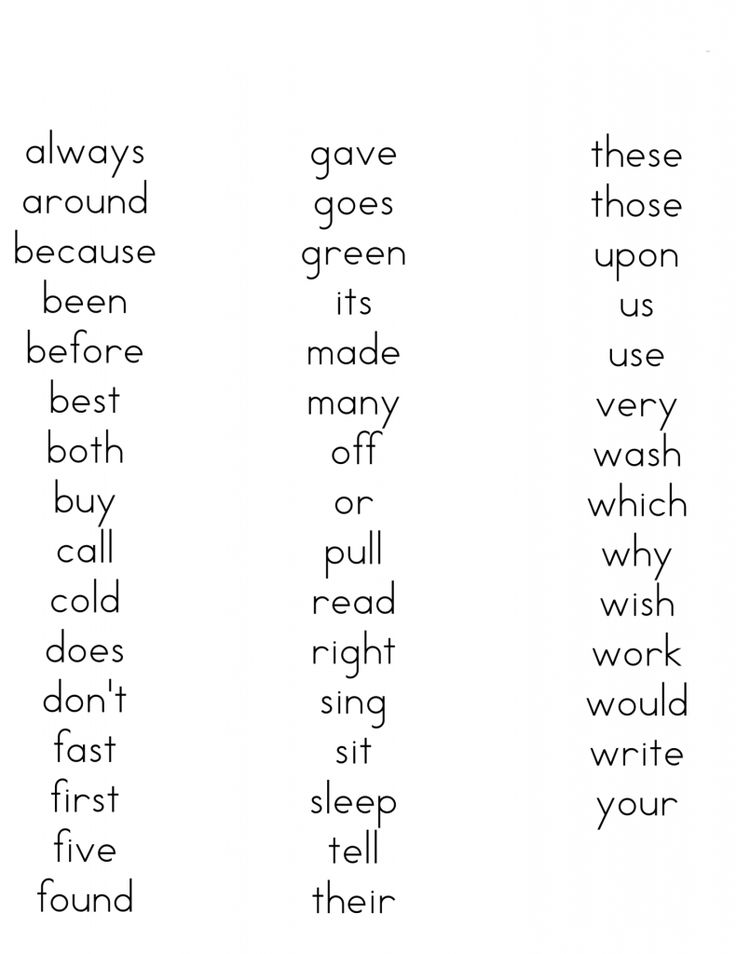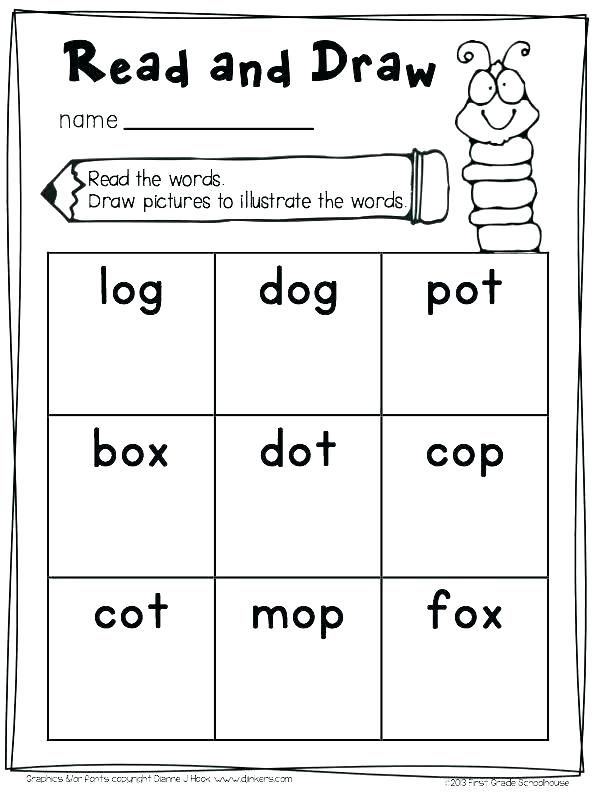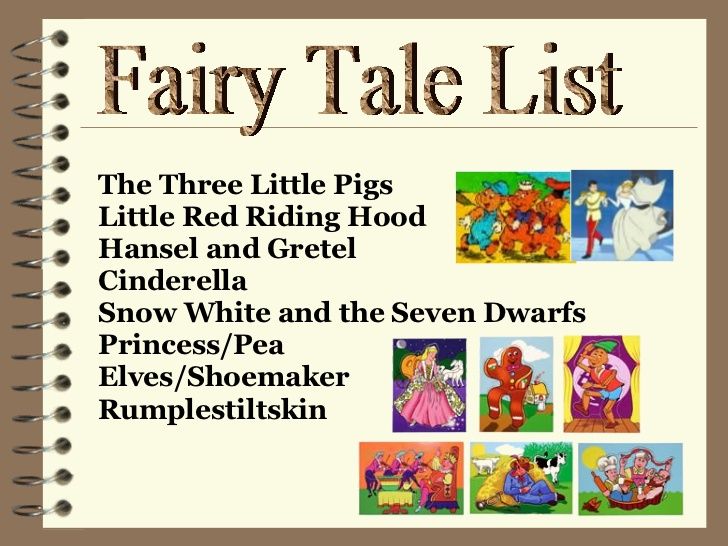At home games
18 Fun Games to Play at Home
Sometimes it is too hot or too cold to play outside. Additionally, most activities that take place away from home require spending money. Games played at home provide an alternative source of entertainment. Our list of fun games to play at home includes suggestions for every age and level of capability. Most require simple materials easily found around your home. We also provide easy to follow directions for each game.
Table of Contents
- 1 Pencil and Paper Games
- 1.1 Dots and Boxes
- 1.2 Cootie
- 1.3 Hangman
- 1.4 Tic-Tac-Toe
- 2 Building
- 3 Puzzles
- 4 Hide and Seek
- 5 Treasure Hunt
- 6 Indoor Bowling
- 7 Hot Potato
- 8 Guess the Sound
- 9 Touchy Feely
- 10 Artistic Antics
- 11 Domino Run
- 12 Freeze!
- 13 Dance Party
- 14 Categories
- 15 Word Whiz
- 15.1 Related Posts
Pencil and Paper Games
The great thing about pencil and paper games is their simplicity. They can be played anywhere and at any time. When kids get bored at home, simply give them a piece of paper and pencils or pens, and they can entertain themselves for at least an hour. Our selection of pencil and paper games includes several old favorites
Dots and Boxes
A pencil and paper game for two players, Dots and Boxes begins with an empty grid of dots. Players take turns adding a single horizontal or vertical line between two un-joined adjacent dots. The player who completes the fourth side of a 1×1 box earns one point and gets another turn. Players write their initials in the boxes to indicate who completed each. The drawn “board” can be of any size. If you have little time to play or are just learning how to play, try a 2×2 box. A 5×5 box works well for experts. Dots and Boxes ends when there are not more lines that can be placed. The winner is the player with the most boxes completed.
Cootie
The object of this game is to draw a completed cootie bug before the other players.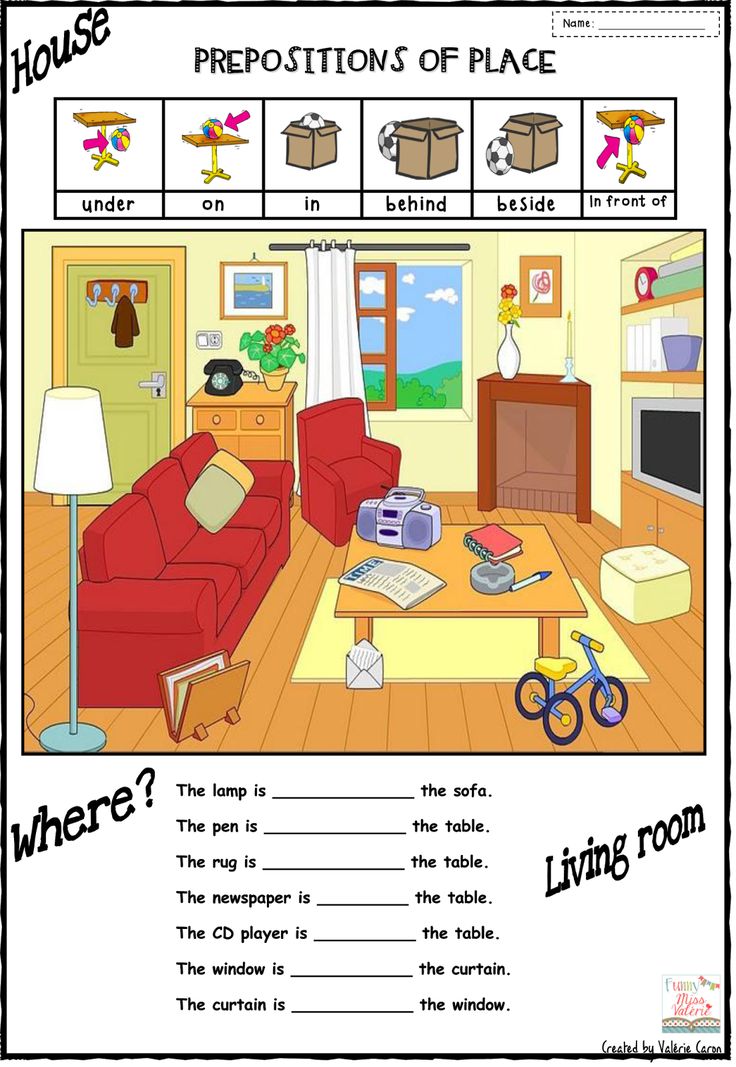 Provide each player with a piece of paper and a pencil. Players roll a die to complete their bug. Every time, the number of dots on the die represents a different body part:
Provide each player with a piece of paper and a pencil. Players roll a die to complete their bug. Every time, the number of dots on the die represents a different body part:
- 1 = body
- 2 = head
- 3 = antennae, hat, or bow
- 4 = eye,
- 5 = tongue, teeth, or lips
- 6 = a leg
Have each player roll the die and the player with the highest roll goes first. A player must start by throwing a one for the body and then a two for the head. If a player cannot roll the required numbers, they lose their turn and must try again on their next turn. After a player gets the body and head, cootie parts can be added in any order a player desires. However, if a player rolls a number of a cootie body part they already have, their turn is over. When a player successfully rolls a needed number, they get a free roll to attempt to get another body part. The winner of the game is the first to finish their cootie.
Hangman
A challenging two-player word game, Hangman challenges players to complete the spelling of a word before a drawing of a hangman is finished. The first player thinks of a word or phrase and writes a blank for every letter below a drawing of a gallows with an empty rope. The second player attempts to spell the word by guessing letters. Each wrong guess gives the guessing player a body part added to the swinging rope – a head, torso, two arms, and two legs. If the hangman is completed before guesses provide the correct word or phrase, the player who chose the word wins. To stump an opponent, use short words or words with repeated letters.
The first player thinks of a word or phrase and writes a blank for every letter below a drawing of a gallows with an empty rope. The second player attempts to spell the word by guessing letters. Each wrong guess gives the guessing player a body part added to the swinging rope – a head, torso, two arms, and two legs. If the hangman is completed before guesses provide the correct word or phrase, the player who chose the word wins. To stump an opponent, use short words or words with repeated letters.
Tic-Tac-Toe
Tic-Tac-Toe is one of the first pencil and paper games a child learns. To begin playing, draw a grid of two horizontal lines dissecting two vertical lines. Players take turns choosing a box and placing either the letter 0 or the letter X to mark their box. The goal of the game is to fill in three marks in a row or block your opponent from doing so.
Building
Have fun building castles, homes, construction sites, and forts with anything available.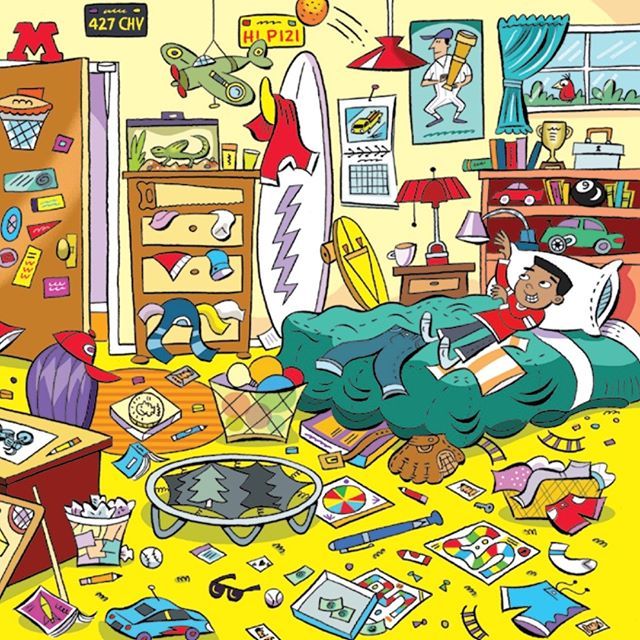 Provide the kids with building blocks, empty cardboard or plastic containers, toilet tissue and paper towel cardboard tubes. Alternatively, build a fort with boxes, blankets, and pillows.
Provide the kids with building blocks, empty cardboard or plastic containers, toilet tissue and paper towel cardboard tubes. Alternatively, build a fort with boxes, blankets, and pillows.
Puzzles
Puzzles are not only fun, but also build problem-solving and cognitive abilities. Choose from one or more of the following:
- For a real challenge, pull out a 1000 piece jigsaw puzzle.
- If children are of different ages, set up several jigsaw puzzles for different skill levels.
- Have your children make their own puzzles by drawing a picture on the cardboard. Outline puzzle pieces on the finished pictures, cut them out, and have each child put together either their own or another child’s puzzle.
- Purchase inexpensive puzzle books – crosswords, word search, and Sudoku – for kids to work through.
Hide and Seek
Hide and Seek works with children of any age. For indoor hide and seek, you may wish to set a limit on the areas in which they hide.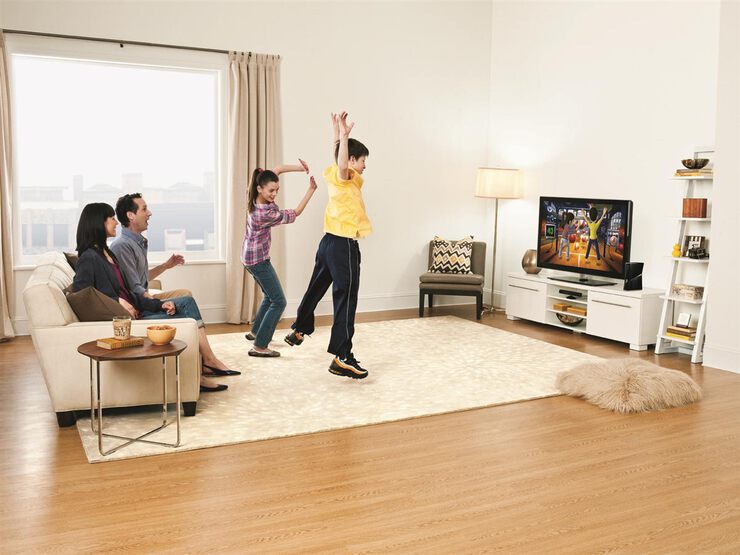 Older children will enjoy an evening game played outside in the dark – have the person playing “It” carry a flashlight for safety. Vary the time “It” counts depending on the age level of players and the size of the playing area. The last person found becomes the new “It.”
Older children will enjoy an evening game played outside in the dark – have the person playing “It” carry a flashlight for safety. Vary the time “It” counts depending on the age level of players and the size of the playing area. The last person found becomes the new “It.”
Treasure Hunt
Kids love finding hidden objects and although this fun game to play at home does take a bit of preparation, the fun it provides is worth it. Begin by writing clues on small folded slips of paper. Each clue leads kids to the next place with an additional note. When the kids reach the end, they find a prize. Alternatively, leave coins in each spot, beginning with pennies and working up to the end and a larger amount of money.
Indoor Bowling
- Collect ten empty plastic water bottles and fill them part way with water for stability.
- Arrange them the way bowling pins are usually set up.
- Use a medium sized ball for knocking the pins down.
- Set a starting line and have kids take turns attempting to knock all the pins down.
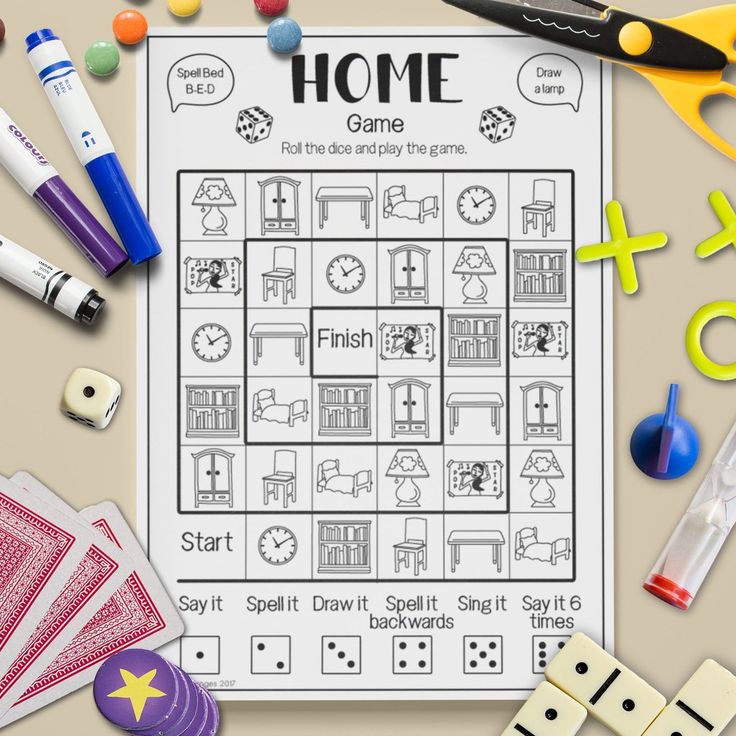
- The easiest way to keep score is to give out one point for each pin knocked down.
- Give a reward to the winner with the most points.
Hot Potato
An old favorite, play begins with everyone sitting in a circle on the floor. Turn on music while players pass the “hot potato” – a bean bag or small soft ball – around the circle as quickly as they can. When the music stops, the player holding the hot potato is out. When only one player is left, you have a winner of the game.
Guess the Sound
Gather several items that produce some sort of sound. Blindfold players and have them guess the item from the sound it makes. You can show the items to younger children at the beginning of the game. For older children, make them guess without seeing the items. Some items to include are:
- A stapler – staple a paper
- A glass – hit the side with a spoon
- A pill bottle – shake it
- A piece of paper – tear it
- A comb – rub your fingers along the teeth
- Wood blocks – bang them together
- A pot with a lid – place the lid on top noisily
Touchy Feely
Although this game has its origin as a classroom sensory table experience for pre-schoolers, children of any age find joy in this touchy feely game.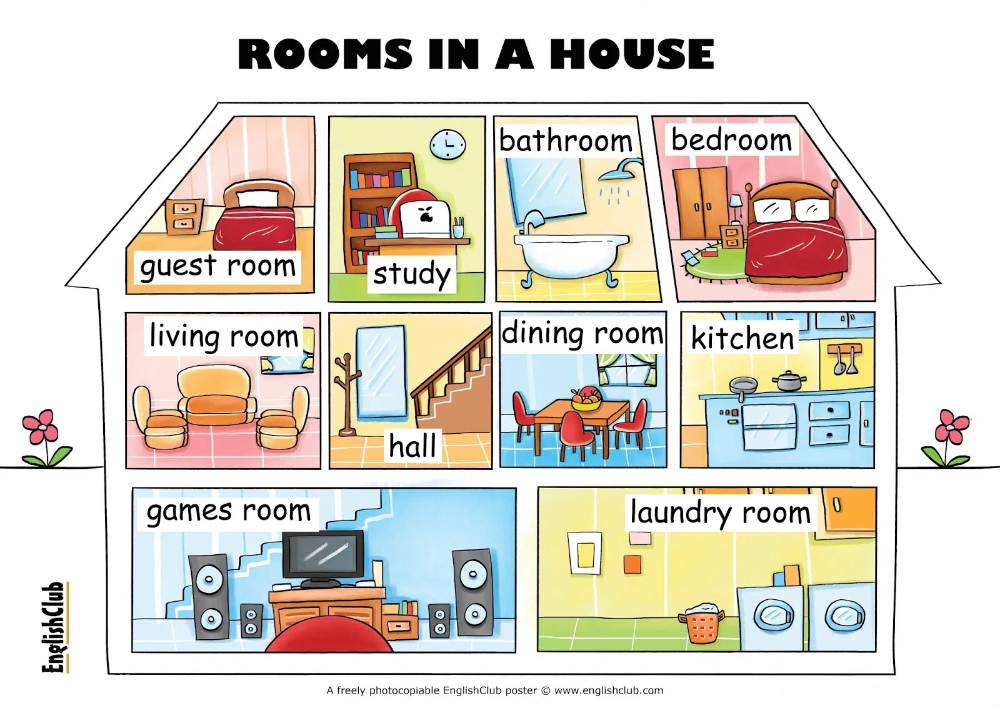 Find a heavy box with a lid you can close. Cut a hole in the side large enough for a hand to fit through. For younger children, a decorated shoebox is fun. Put your item inside the box and have each child guess what it is. Players can ask questions and you can offer a clue if you wish. The “winner” is the player who identifies the most substances and objects. Try one or more of the following:
Find a heavy box with a lid you can close. Cut a hole in the side large enough for a hand to fit through. For younger children, a decorated shoebox is fun. Put your item inside the box and have each child guess what it is. Players can ask questions and you can offer a clue if you wish. The “winner” is the player who identifies the most substances and objects. Try one or more of the following:
- Cooked rice or spaghetti
- Seeds from a fresh pumpkin
- A piece of fruit – apple, orange, grapes, or cherries
- A toy – child must specify what it is
- Gelatine dessert
- Feathers
- Real and fake flowers
- Dehydrated potatoes
- Cereal
Artistic Antics
Choose the oldest or youngest to start this drawing game and then have players draw in order of their birth date. Find a fairly large piece of paper and get out colored pencils, crayons, or markers. The first player begins by drawing a line, circle, or other piece of a picture.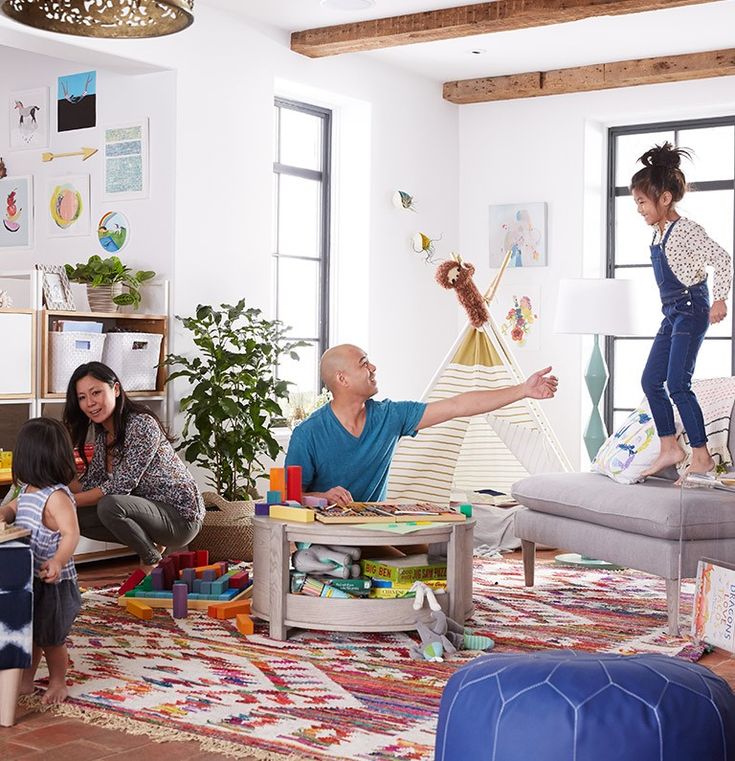 Each player adds to it. Keep having players add to the picture until everyone has a turn, if you have many players, or until the players have had a predetermined number of turns. See what type of interesting drawing results.
Each player adds to it. Keep having players add to the picture until everyone has a turn, if you have many players, or until the players have had a predetermined number of turns. See what type of interesting drawing results.
Domino Run
Set up dominoes to make a domino run by standing them on end in long lines so that when the first tile topples, it topples the second, which topples the third, then the fourth, until all of the tiles fall. Begin with relatively few dominos and increase the number and difficulty of the design with each subsequent run. Kids will spend a great deal of time with this exercise.
Freeze!
Choose some of your kids’ favorite music and have them dance until the music stops, at which point they must freeze. You can have them freeze in whatever position they are in when the music stops or specify a position. Some good choices are the shapes of:
- Animals
- Expressing an emotion
- Letter
- Plants – trees or flowers
- Yoga positions
Dance Party
Another fun musical game is to have a dance party. Try some fun genres such as a square dance or some classical music along with your kids’ favorites. If you wish, kids can dress up for some of the music. Dance party time is great way to work off some extra energy, so try it before naptime for your little ones.
Try some fun genres such as a square dance or some classical music along with your kids’ favorites. If you wish, kids can dress up for some of the music. Dance party time is great way to work off some extra energy, so try it before naptime for your little ones.
Categories
You may need to help your youngest children begin this game, but older children can play it without assistance. To begin, choose between five and ten categories and write them across the top of a piece of paper. Some suggestions are:
- Birds
- Animals
- Countries
- Games that use a ball
- States
- Television shows
- Things with wheels
- S. Presidents
- Vegetables
The first player chooses any random letter of the alphabet. All the players have one minute to come up with something for each category listed that begins with that letter. At the end of each round scores are totalled. However, you only get a point if no one else came up with the same thing or name. The more obscure the words chosen for each category usually earn the most points.
Word Whiz
A dictionary game for older children, word whiz can be played indefinitely. Provide each player with a piece of paper and a pen or pencil. Pass around a dictionary and each player in turn chooses a word the meaning of which they believe the other players do not know. Players read words aloud and spell them if necessary. The players who have not chosen the word write down what they believe the word means. All the definitions are read and the players vote for which one they think is correct. The player with the word gets one point for each vote and then reveals the real definition. The player with the most points at the end of a set number of rounds wins the game.
Whether you have a family of all ages or just one child, our selection of fun games to play at home has a game perfect for you. When you want to play games at home, you want something with quick and easy directions and set up. Very few of the games in this article require any outlay of funds or extra equipment. Additionally, many can be modified for different ages and group sizes. Fun games to play at home can be quick, such as a few games of tic-tac-toe, or take a great amount of time, like a 1000 word puzzle. For rainy or hot summer days, our games provide enjoyment and many, such as the puzzles and word games, are also educational and build thinking skills. Choose a game and have fun!
Susan Box Mann
Susan majored in English with a double minor in Humanities and Business at Arizona State University and earned a Master’s degree in Educational Administration from Liberty University. She taught grades four through twelve in both public and private schools. Subjects included English, U.S. and world history and geography, math, earth and physical science, Bible, information technologies, and creative writing.
Susan has been freelance writing for over ten years, during which time she has written and edited books, newspaper articles, biographies, book reviews, guidelines, neighborhood descriptions for realtors, Power Point presentations, resumes, and numerous other projects.
Read full bio
Indoor games: 20 ideas to keep the kids entertained on a rainy day
Photo: iStockPhoto
Another rainy or bone-chilling day? We see you over there: Restless kids fidgeting on the couch, the clock ticking slower than usual, and you're fresh out of ideas for things to do. Well you've come to the right place. We have your back with this list of the best indoor games you haven't already tried.
1. Pencil-and-paper gamesFrom Battleship to Sprouts, we’ve created a must-play list of pencil-and-paper indoor games that beat TV any day. Gather some pencils and paper and check out our best of pencil-and-paper games.
2. BuildingYou don’t need a fancy building set for this. Popsicle stick cities, card towers, even buildings out of blocks, or indoor forts out of boxes or pillows, will do just fine. If you want to get competitive, whoever builds the highest tower wins. If your kids love building and want a more advanced set of blocks, check out these magnetic building sets (ages 3-99) your builders are sure to enjoy.
Be your kids’ very own Harry Houdini—without the locks, chains and water tanks, of course. Simply place a coin under one of three cups and shuffle the cups around. Then ask your children to guess which cup holds the coin. Sneaky parents can place the cups near the edge of a table and secretly drop the coin. Watch your tots’ eyes light up in amazement when they learn the coin is gone!
4. Card gamesCard games are great for challenging young minds and creating hours of indoor fun. Grab a box of cards and check out our favourite traditional card games.
5. PuzzlesExercise those creative, cognitive and problem-solving muscles with a good puzzle. You can use a store-bought variety or have the kids make their own. Have your children draw a picture on a sturdy piece of cardboard or Bristol board. Then use a pencil to outline puzzle pieces directly on their drawing. Cut out the pieces with a good pair of scissors, mix them up and get solving. Indoor games and craft in one fun activity!
Choose some of your kids’ favourite tunes and turn up the volume. Ask them to dance until the music stops. When it does, they have to freeze in whatever position they find themselves in – even if they have one leg up. To make the game more challenging, ask the kids to freeze in specific poses: animals, shapes, letters or even yoga postures. Toddlers in particular love this game.
The winner gets her very own gold medal! Make your own ribbons with this easy craft:
7. Board and family gamesFor a comprehensive list of the best of family indoor games from Nursery Rhyme Games and Candy Land to Clue, check out our handy list of top 20 family games.
This indoor game is ideal for larger groups — a sleepover favourite. Divide the kids up into groups. Give each group a bag filled with props, such as a spoon, toy jewelry, a sock, ball or ribbon. Then give them 15 minutes to construct a skit around the props. This game is so much fun that it doesn’t have to be competitive. If the kids want, though, they can all vote on a winning skit.
9. Indoor hopscotchThis schoolyard favourite is sure to be an indoor hit, too. Set up your hopscotch game on any floor surface. Masking tape will do perfectly to form the nine connecting squares. Boxes 1-3 will be placed in a single line, one on top of the other. The next two boxes (4, 5) will be placed side-by-side, followed by a single box (6), two more boxes (7, 8) and the final half-circle “home” base (9). Next, choose a marker, such as a coin, stone or beanbag. The first player will throw the marker into square 1 without letting it bounce or touch the lines. If successful, the player will then hop — one foot on single squares and two feet on side-by-side squares — avoiding square #1. The player may rest on “home” before hopping back. On the way back, he or she picks up the marker on square #1 and, if successful (lands within the lines, hops or jumps with proper footing, doesn’t fall), takes another turn and throws it into square #2. When the player is unsuccessful, the next player takes a turn. Players resume their turns by throwing the marker on the last box played. The winner is the first player to throw the marker home (#9), and smoothly complete the whole course.
While you have your masking tape out, why not make your own balance beam? We all know how much kids love walking in straight lines every chance they get. Put on some music, and one at a time the kids can take their turn walking one-foot-over-the-other across the straight line of tape. Make the game more challenging by having the kids walk backwards or balance with one foot on the line. We also love this beam to continue balancing practice with! It's challenging enough to help develop their gross motor skills but safe in elevation as they learn to navigate the beam.
No list of indoor games would be complete without Hide and Seek, now would it? In this classic game, one person (“It”) covers his or her eyes and counts aloud while the other players hide. When “It” is finished counting, he or she begins looking for the hiders. The last hider to be found is the next “It.” Warning: this game is often a source of giggle fits. Families with older children might want to take things up a notch and play Hide and Seek in the dark. Just to be safe, make sure there are no loose items on the floor. If you want, allow “It” to carry a flashlight or turn the lights on once “It” finishes counting.
12. Treasure huntKids love finding hidden objects — especially when there’s a prize at the end. Simply write your clues on some slips of paper — get creative. Place the first clue somewhere easy to find, like inside your child’s snack or cereal bowl. Then leave as many clues as you like around the house, making a trail to the final clue. Instead of a prize, the treasure hunt can lead to various coins around the house. This way the kids get to collect all the coins and put them in their piggy banks in the end. If you want to create the most amazing treasure hunt, follow these 11 tips.
A great way to reuse water bottles (or you can purchase an indoor bowling set). Line six-10 water bottles up at the end of your hall or living room. Place a line of duct tape at the starting line. Grab a medium-sized indoor ball and start bowling! If you want, keep score and give out trophies at the end. (Note: if you need to stabilize the water bottles or make the game more difficult, simply fill them up with some water. Don’t forget to screw the tops on tightly!)
14.This game will have everyone giggling. Ask the kids to sit on the floor in a circle. Turn on some tunes and have them pass the potato (a bean bag or soft ball) around the circle as fast as they can. When the music stops, the player holding the potato leaves the circle. Keep going until only one player is left and wins the game.
15. Picnic memory gameFormer preschool director and grandmother of three, Marsha Colla, has some innovative games up her sleeve, including this fun and simple verbal memory game, which, Colla says, “challenges the children and makes them giggle.” To play, everyone sits in a circle. The first player says, “In my basket for the picnic, I packed...,” and then says what item he or she packed. The next player then says, “In my basket for the picnic, I packed...,” and then recites what the first player packed and adds his or her own item to the basket, and so forth.
16. The listening gameOne of Colla’s go-to indoor games for her preschoolers and grandchildren, this game is sure to both educate and delight little ones. Take out several miscellaneous items. Have the children look at all the items, and then take them away. Next, ask one child to hide his or her eyes and listen as you pick up an item and make sounds with it. Ask the child to guess which item made the sound. Examples of items might be a comb (run your fingers along it), a glass (gently tap it), cymbals, shakers, sandpaper, blocks rubbed together, a pot and spoon. Be creative and have fun!
You don’t have to go outside to enjoy bubbles. For this indoor game, you need a plate and straw for each player, some dishwashing soap and water. Place a dime-size drop of dish soap at the centre of each plate. Pour a little water onto the plate and gently mix with the dish soap until some suds start to form. Have the kids place the straw in the suds and blow very gently. Watch as massive bubbles start to form. To make this competitive, see who blows the biggest, or longest-lasting, bubble.
This traditional favourite will never get old. To start, choose one player (probably a parent for the first round) to be Simon. The rest of the players will gather in a circle or line in front of Simon as he calls out actions starting with the phrase “Simon says”: “Simon says...touch your toes.” The players then have to copy Simon’s action, touching their toes. If Simon calls out an action without uttering the phrase “Simon says,” the kids must not do the action. If a child touches his toes when Simon didn’t say..., he or she is out of the game. There are lots of great ways Simon can trick players into doing actions when Simon didn’t say: Simon can perform an action without uttering a command, for example, or he can perform an action that doesn’t correspond with the command. Fun! The last player left in the game wins and becomes the next Simon.
19. Touch-and-feel boxMost preschoolers flock to the classroom sensory table as soon as the teachers pull it out. So there is little doubt they will love this entertaining challenge. Find a shoe box or any box that has a lid on it. Cut a hole in one of the sides of the box —large enough for your child to fit her hand in. If you want, get creative and decorate the box with glitter and question marks. When you’re ready to play, put an item inside the box and have your children guess what it is. They can ask questions about the item if they need to, or you can offer clues. Get as ooey-gooey as you wish (fresh pumpkin seeds or slimy spaghetti are great choices for Halloween), or use such simple objects as a brush, a toy, a piece of fruit. To make it competitive, you can give a point to the first child to name the object.
You can’t be too little for this version of basketball. All you need is a bucket and a rolled up sock (or a small, light ball). Each player takes a turn at throwing the sock-ball into the bucket. When a player scores a bucket, he or she takes a step back and throws again until missing. The player who shoots the ball in the bucket from the farthest distance wins.
This article was originally published on Nov 12, 2019
Home games • Arzamas
You have Javascript disabled. Please change your browser settings.
Children's room ArzamasMaterialsMaterials
Arzamas for classes with schoolchildren! A selection of materials for teachers and parents
Everything you can do in an online lesson or just for fun
Cartoons are festival winners. Part 2
Tales, parables, experiments and absurdity
Guide to Yasnaya Polyana
Leo Tolstoy's favorite bench, greenhouse, stable and other places of the museum-estate of the writer worth seeing with children Migrants: how to fight for their rights with the help of music
Hip-hop, carnival, talking drums and other non-obvious ways
Old records: fairy tales of the peoples of the world
We listen and analyze Japanese, Italian, Scandinavian and Russian fairy tales
Video: ISS commander asks a scientist about space
Lecture at an altitude of 400 kilometers
How to make a movie
Horror film, comedy and melodrama at home
The most unusual animation techniques from sunflowers, cartoons and VR spices
Play the world's percussion instruments
Learn how the gong, marimba and drum work and build your own orchestra
How to put on a show
Shadow theatre, reading and other home theater options for children
Soviet puzzles
Solve children's puzzles of the 1920s-70s
22 cartoons for the little ones
What to watch if you don't have six
From "Wild Dog Dingo" to 904 "Timur and his team" 9003 What do you need 9003 to know about the main Soviet books for children and teenagers
A guide to children's poetry of the 20th century
From Agnia Barto to Mikhail Yasnov: children's poems in Russian
10 books by artists
Pages made of tracing paper - Milanese fog, and binding between reality and fantasy
How to choose a modern children's book
"Like Pippi, only about love": explaining new books through old ones
Word games
"Hat", "telegrams", "MPS" and other old and new games
Games from classic books
What the heroes of the works of Nabokov, Lindgren and Milne play
Plasticine animation: the Russian school
From Plasticine Crow to Plasticine Sausage
Cartoons - winners of festivals
Brave Mom, My Strange Grandpa, A Very Lonely Rooster and others
Non-fiction for children
How a whale’s heart beats, what’s inside a rocket and who plays the didgeridoo — 60 books about the world around
Guide to foreign popular music
200 artists, 20 genres and 1000 songs that will help you understand the music of the 1950s-2000s
Cartoons based on poems
Poems by Chukovsky, Kharms, Gippius and Yasnov in Russian animation
Home games
Shadow theater, crafts and paper dolls from children's books and magazines of the 19th–20th centuries
Books for the smallest
Modern literature from 0 to 5: read, look at, study
Puppet animation: Russian school 9004
Crow in Love, Devil No. 13, Lyolya and Minka and other old and new cartoons
Smart coloring books
Museums and libraries offer to paint their collections
Reprints and reprints of children's books
Favorite fairy tales, stories and magazines of the last century, which can be bought again
What can be heard in classical music
Steps on ice, the voice of the cuckoo and the sounds of the night forest in the great compositions of the 18th–20th centuries
Soviet educational cartoons
Archimedes , dinosaurs, Antarctica and space - popular science cartoons in the USSR
Logic problems
Settle the wise men's dispute, make a bird out of a shirt and count the kittens correctly
Contemporary children's stories
The best short stories about grandmothers, cats, spies and knights
How Russian lullabies work
We explain why a spinning top is scary and why you shouldn't lie down on the edge. Bonus: 5 lullabies by Naadya
Musical fairy tales
How Tchaikovsky, Rimsky-Korsakov and Prokofiev work with the plots of children's fairy tales
Armenian School of Animation
The most rebellious cartoons of the Soviet Union
The Dina Goder Cartoon Collection
The Program Director of the Big Cartoon Festival advises what to watch with your child
Cartoons about art
How to tell children about Picasso, Pollock and Tatlin using animation
40 fire and who has a sieve in his nose: riddles from "Chizh", "Hedgehog" and books by Marshak and Chukovsky
Yard games
"Traffic light", "Shtander", "Kolechko" and other games for a large company
Poems that are interesting to learn by heart
What to choose if you were asked to learn a poem about mother, New Year or autumn
Old audio performances for children
Ole Lukoye, Gray Sheika, Cinderella and other interesting Soviet Recordings
Cartoons with classical music
How animation works with the music of Tchaikovsky, Verdi and Glass
How children’s rhymes work
“Ene, bene, slave, kvanter, manter, toad”: what does it all mean
Arzamas, together with the "Then" project, selected quiet games from children's books and magazines of the 19th-20th centuries. For these activities, you will need almost nothing but paper, glue, scissors and other items that are easy to find at home.
Paper dolls and models
Claudine on the beach
France, mid-20th century
Open PDF
Volumétrix / Agence Eureka
Instructions: "Carefully cut out your doll and glue the front to the back, then lay it out to dry between two books for an hour. Cut out both sides of the stand, cut two slots in one of them. Make folds on the back of the doll's feet and insert them into the slots on the stand, then glue them to the second part of the stand. Cut out the doll's clothes along the contour, make cuts with a penknife. Mark the dotted lines with a ruler and penknife point and then bend them. Dress up your doll the way you want; to fix clothes, insert the flaps into the corresponding slots.
Residents of Amsterdam and their attire
Holland, 1861–1865
Open PDF
Rijksmuseum
Elephant, lion and crocodile in the zoo
From Le journal de bébé. France, first half of the 20th century
Open PDF
Agence Eureka
Instructions: "Paste all three animals and the coasters on thin cardboard and cut them out along the outline. Bend the shapes inward along the lines drawn by the dash and outward along the lines drawn by the dots. Stick the animals on the appropriate coasters."
Fairy bird
From Jeunes Années. France, 1960s
Open PDF
Agence Eureka
Instructions: To bring your bird to life, first cut it out. Make cuts on both sides along line F. Then fold the bird in half along the dotted line (see fig. 1). Insert one notch on the wings into the other (Fig. 2) and bend the tail up as shown in the picture. Fold the perch as in pictures A, B and C, and make an incision where you can then put the bird.
Accordionist playing
France, mid-20th century
Open PDF
Agence Eureka
Instructions: “Before you cut out the pieces, glue these two pages firmly to a sufficiently thick cardboard. Cut dotted lines A, B, D and E and cut slot C. Connect point 2 on the handle to point 2 on the accordion through slot C For example, with threads; other dots also need to be connected behind the picture.
American tramcar
From The Boston Sunday Globe. USA, 1896
Open PDF
hedgehogstudio.com
Instructions: “Carefully cut out the pieces.
1. Bend the two parts of the car along the dotted lines and secure with flap A. Make cuts on the heavy black lines on the roof and insert the signs on the walls of the car into these holes, first rounding the roof to match the end of the car.
2. Bend the seats along the dotted line and insert them inside the car, connecting valves 1, 2, 3, 4, 5, 6 and their corresponding slots in the walls of the car.
3. Bend the colored seat flaps and secure them. Make cuts on the thick black lines on the bottom of the car and insert the wheels into them until the walls of the car are fixed. After that, put the conductor and driver in their places, threading them into the corresponding slots on the floor. Insert the trolls into the slot on the roof of the car."
Eiffel Tower
From Le journal de bébé. France, first half of the 20th century
Open PDF
Agence Eureka
Instructions: “Stick the pages onto thicker paper, carefully cut along the outline, then fold the flaps along the dotted lines and glue. Do not take sides C and D until A and B are glued together.
Summer in the village
From the Murzilka magazine. USSR, 1926
Open PDF
“Then”
Instructions: “Cut out and glue all the figures; unbend the bottom of the stands so that the figures can stand.
Town
From Le journal de bébé. France, first half of the 20th century
Open PDF
Agence Eureka
Instructions: "Paste the pages on thicker paper, carefully cut, fold along the dotted lines and glue. "
Crafts
Animals made from acorns and matches
From the book "Acorns and matches". USSR, 1930
“Then”
Instructions: “Punch holes with a penknife or a thick needle and insert match necks, legs, beaks and tails. Poke your eyes with a needle too.
Complete book "Acorns and Matches"
Toys made of matches and potatoes
From the book "Homemade-precocious". USSR, 1931
“Then”
Instruction: “All these toys can be made from potatoes. Choose suitable potatoes and wash them well.
Cut and gouge as shown with a penknife.
Make arms, legs, necks, tails out of matches or sticks. You can also fasten potatoes with matches.
The whole book "Homemade-precocious"
Theater and panoramas made of cardboard
Panoramas
From Le journal de bébé. France, first half of the 20th century
Open PDF
Agence Eureka
Instructions: Paste two pages onto thin but strong cardboard. Then cut out the first page and disc from the other page. Put both pictures on the table, put the disk under the first picture. Attach a button to the circle on the child's belt In the second example, to the center of the cap held by the little girl. The location of the buttons is marked in the instructions with a dotted line. Use the same button to pierce the center of the disc. To see how the scenery changes, spin the dial with your finger."
Cinderella: theater in a box
From The Designer magazine. USA, 1913
Open PDF
hedgehogstudio.com
Instruction: "Take a cardboard box" A shoe box will do. 15 by 20 centimeters and about 8 centimeters deep; put it on its side - this is the stage. Cut out the first and second backdrops and stick them on thick paper, leaving additional margins on it that can be folded over like flaps. Closer to the bottom of the box, attach the backdrop with the street so that it then ends up exactly behind the doorway. Place a backdrop with a picture of a house, leaving room for the pumpkin carriage to pass. Cut out the front of the stage, stick on the lid of the box, cut out the extra white space. Cut out the figures, stick them on thick paper, leaving a narrow strip of about 10 centimeters above their heads so that you can move the characters around the stage. The carriage must be left with two horizontal stripes at each end. In order to control the figures, you need to cut holes in the box, for example like this.
Chinese shadow theater
From the Murzilka magazine. USSR, 1927
Open PDF
“Then”
Instructions: “Stick the theater arch onto cardboard. Glue the cutout of the arch with thin paper and oil it. It can also be sealed with tracing paper (parchment). Glue the bottom of the stage onto cardboard. Glue all parts of the figures onto cardboard and cut them out. Pick up the figures by letter, connect the parts of the figures at the points of the same numbers and secure with knots of thread; then the figures can be given movement.
Shadows
Animals and Birds
From the brochure "Shadows". USSR, 1942
“Then”
Instruction: “On a sunny day or in the evening, with a lamp, clear shadows appear on a brightly lit wall. Fold your arms as shown in one of the drawings, stand against the wall so that the shadow from your head and shoulders does not block the shadow from your hands. Move one or the other finger, and the shadow of the animal will open its mouth. If the shadows show two, you can play whole scenes.
Brochure "Shadows" complete
Simple finger shapes
From A Little Bit of Everything. USSR, 1920s
"Then"
Shadow to the poem "About the gray hare"
From the book "The gray hare". USSR, 1920s
"Then"
Board games
"Goat Dereza"
From "Murzilka" magazine. USSR, 1926
Open PDF
"Then"
Instructions: Up to six people can play, you will need a die to play.
“A wolf, a fox, a dog, a rooster and a bee heard the cry of a hare in the forest and hurried to him to find out what was the matter. So they go through the forest and reach the bunny, who tells them that the dereza goat came to him, drove him into the forest, and she herself settled in his house. Everyone is in a hurry to help the bunny and drive out the goat. The one who first gets to the goat (up to the circle in the orange cage), kicks it out and is considered the winner.
Some cells have special values for different players:
"No. 3. Strawberries. The bear, having eaten strawberries, goes faster (move the circle to No. 8). The rooster has lost a strawberry, is looking for it and is delayed (skips the line).
No. 7. Thunderstorm. Everyone hears thunder and hurry (move to #12).
No. 9. Flower. The bee collects honey (skips the line).
No. 11. Rain. Everyone is in a hurry (on No. 15).
No. 14. Beehive. The bee, leaving honey, flies faster (on No. 18). The bear climbed for honey, he is being chased by bees (he skips the line).
No. 16. House. The wolf stops and tracks down the prey (skips the line).
No. 17. Ear grains. The rooster, having pecked at the grains, goes faster (forward to No. 21).
No. 20. Dense forest. Everyone goes around the thicket (back to No. 18).
No. 23. Traces of a dereza goat. The dog smelled the tracks of the goat, guesses the offense of the hare and runs faster along the trail (forward to No. 27).
No. 26. Anthill. Everyone is in a hurry from the ants (on No. 29).
No. 28. Nettle. Everyone, having been hit by nettles, runs back (to No. 27).
No. 31. Fox. The fox meets a friend and chats with her (skips the queue).
No. 36. Fence. The wolf runs up to jump (back to #33), then jumps (throws again and counts the number of points rolled twice). The dog is the same. The fox is the same.
No. 40. Forest fire. Everyone gets scared and runs (back to #25).
No. 42. Bunny. Everyone, having heard the complaint of the bunny, is in a hurry (throw the knuckle a second time).
#45 Everyone is scared of goats (back to #39)."
Steeplechase
From Le journal de bébé. France, first half of the 20th century
Open PDF
Agence Eureka
Instructions: “Paste the board on cardboard and cut out six pawns of different colors.
Rules of the game: play from two to six players. If there are two players, each gets three pawns; if three, then two; and if there are four, five or six - one at a time. Players move the pawns across the field as many squares as they fall on the dice, which they throw in turn. If the pawn lands on squares 8, 17, 33, 42 and 65 (these are "Barriers"), it moves back three squares. If on the "Wall" on cell 49, the player waits for another player to free his pawn. If on the "Fence" on cell 56, the pawn returns to one of the cells before the "Wall", from 43rd to 48th, at the player's choice. If the pawn hits the "Log" on cell 61, then it starts the whole game anew from the first cell, and if it hits the "River" on the 25th cell, then it leaves the game. The winner is the one who passes all the cells first with the maximum number of pawns, if there are less than four players; and the one who comes first if there are more than four players.
Cat and Mouse
France, mid-20th century
Open PDF
Agence Eureka
Instructions: “Place the cat on the square labeled ‘Cat’ Chat., and the mouse on one of the numbered squares. The number will indicate the top. The mouse starts the game. The mouse and the cat can advance or retreat any number of cells, from one to five. This also defines a top or a cube. The mouse cannot cross the shaded cells, and the cat cannot cross the black ones. A cat can step over a mouse, but a mouse cannot step over a cat. The mouse is caught if the cat lands on the cell where it is, or if it itself lands on the cell where the cat is. For a mouse to get into a mink, a number must fall out equal to the number of cells before the mink. Otherwise, it goes as many cells as the number that has fallen out is greater than the required number. The mouse wins if it reaches the mink."
Children's room
Special project
Children's room Arzamas
Tags
Children
Game
Entertainment
Radio Arzamas Germans against Hitler
© Arzamas 2023. All rights reserved
42 ideas for a great time
not on the screen of a TV, tablet or smartphone. Think about how long it has been since you played with your child? Oddly enough, even the ideas for the simplest and once popular games have long been lost in memory and have undeservedly lost their relevance.
Games for children are not only a great way to spend time with the family, but also an opportunity to develop thinking, memory, logic, reaction speed. We have collected the best children's games that will captivate the whole family and give a charge of vivacity and positive for a long time.
Contents:
- Children's games at home
- Fun games for children at home: types
- Active games
- Sports games
- Competitions
- Development games
- Speech games
- Construction of houses
- Math games
- Interesting games for two children
- Role-playing games
- Unusual home games
- Music games
- Water games
- Interesting games
- Advice to parents
Children's games at home
Entertaining games for children have many advantages: they bring together all family members who take part in the process, allow you to spend time rich and exciting, without gadgets and TV. The game is a powerful tool for the development of your child. If you are going to spend time together, blowing dust off a box of checkers or a long-forgotten Monopoly, remember a few nuances:
- Try not to prompt your child.
Make an exception to the rule only if he does not yet know the rules. Let them learn to make mistakes and draw conclusions. Undoubtedly, you know more, but let the baby be independent.
- Do not give in, you must be on an equal footing. Therefore, it is worth choosing interesting games for children, where the process does not require encyclopedic knowledge or vast experience, and the rules are simple and understandable for everyone.
- You need to play only with pleasure, getting pleasant emotions. If you notice that the children don’t like the game or they get bored, it’s better to switch to another one: it’s definitely not worth forcing anyone to have fun.
Fun games for kids at home: 9 types0188
What kind of games are there in a confined space? When thinking of entertainment, consider the possibilities of an apartment or house and the age of the child. Excessive noise should not be raised late in the evening, and too primitive games are unlikely to be appreciated by a senior student. Therefore, alternate, experiment, and you will definitely select exactly those family games that will captivate everyone, and just spend time with children without a computer.
Active games
1. Let's go!
Have your child pretend to be a car driving down a dark road. To do this, put a few chairs or other objects, give the child a steering wheel or its round substitute, and blindfold. You are a navigator, a kid is a car, turn on and go! Try switching places so that the child also tries himself as a helper.
Suitable for age: 5-8 years old.
2. Hold the balloon
This kids game will require a balloon and some skill. Task: move the ball from one end of the room / corridor to the other without touching it with your hands and without letting it fall. Let the children be smart: you can blow on the ball, push it with your nose, chin, knees.
If there are two children, arrange a competition: who will bring the ball to the finish line faster. For older participants, the task can be made more difficult by building a path or placing small obstacles that need to be avoided.
Suitable for age: 5-15 years old.
3. Cross the river
Jump ropes, ribbons or two pieces of rope, laid out at a distance of one and a half to two meters from each other, can play the role of banks. From paper, cut out circles that will replace the pebbles.
Invite the child to "get over" from one bank to another, stepping over the stones without "wetting" the legs. The game is simple, but perfectly develops coordination of movements in children 3-5 years old.
Suitable for age: 3-5 years old.
4. "Brilliant" basketball
In the conditions of an apartment, entertaining games for children with a ball are not very convenient, but if you replace it with small foil balls, and build a basket from a children's bucket or a cut-off five-liter bottle, you get quite a decent basketball.
The competition can be made more difficult: throw in turn with the left and right hand, count who will have more hits per minute, vary the distance from the player to the basket.
Suitable for age: 5-13 years old.
5. Classics
The good old "jumping" is definitely worth remembering and arranging a game even within an apartment or house. With construction tape on the carpet, “draw” a classic, a round candy box can be used as a “bit”. The main thing is to remember the neighbors below and try not to disturb their peace in the evening.
Suitable for age: 5-10 years old.
6. The fastest turtle
Turning into a turtle is easy! Get on all fours, put a pillow on your back and go to the finish line, so that your "shell" is not lost along the way. You can arrange a competition "Who is faster?" or which of the "turtles" will show the best time.
Suitable for age: 4-7 years old.
![]()
7. Insidious ball
Throwing the ball within the apartment is not the safest activity, so you can think of other activities with it. Lie on your stomach opposite each other, put the ball between your heads. Try to stand up while holding the ball with two hands, without the help of hands.
Another option would be to compete, in which case two balls would be required. Get on all fours and, on command, start rolling the ball, touching it with your forehead or nose, without helping with your hands. Whoever crosses the finish line the fastest wins.
Suitable for age: 5-10 years old.
Sports games
It is possible to entertain children at home with games not only for the purpose of entertainment. Motor activity is necessary, especially for a fidget baby. Come up with stories, remember your favorite animals or fairy-tale characters, accompanying interesting stories with movements as the story progresses. The child will be happy to imitate a bear, jump like a monkey or stretch his neck like a hissing goose. Mobile children's games will allow you to spend all the extra energy that the baby has accumulated, directing it in the right and useful direction.
8. Jumper
Hang the balloons from the ceiling at such a distance that the child can reach them only by jumping. Pre-fill them with foam balls, large confetti or other light fillers.
The child's task is to jump up, hitting the ball with his hand, and reach it. You can diversify the game by taking multi-colored balls and placing them at different heights, and then, naming the color, ask them to jump to each of them.
Suitable for age: 3-5 years old.
9. Gulliver and the Lilliputians
This activity is suitable for the company of children. Ask them to stand in a circle and tell them that everyone can imagine themselves both very small and very large, the main thing is to be attentive.
At the command of "Lilliputians!" (as an option for children: dwarfs, kids) children should sit down, at the command “Gulliver!” (or "Giants") - stand up. The most attentive wins the game.
Suitable for age: 4-5 years old.
10. Take off the feathers
The following game will help you run and practice your agility. Divide the children into two teams. One attach several clothespins to clothes. The task is to get rid of the “feathers” by attaching them to the clothes of the second team members. The one who first removes all the "feathers" from himself will win.
Suitable for age: 6-7 years old.
11. Who is faster?
If you need to keep the children company at home, offer them something like a small relay race. From the options for passing the distance, use:
- squatting;
- walking around the room with a balloon without touching it with your hands;
- walking with a bag of beans (or a book) on the head;
- jogging over obstacles (for example, without stepping on spread out pillows or, conversely, jogging on sheets of paper), etc.
Suitable for age: 5-10 years old.
Competitions
Sedentary children's games will also help you out in a situation when children need something to do, especially since the place or time may not allow active movement. Such an activity requires, albeit minimal, but preparation. And it, as you know, is no less interesting than the process of the game itself.
12. Quiz
Invite your child to be the host and prepare a competition, say, for a family dinner or tea party when the whole family gathers at the table.
Tell me what questions or riddles to choose, prepare prizes for correct answers, choose the winner, dilute the script with a musical break, turning on karaoke or dance music.
Such quizzes can eventually become thematic and turn into a good family tradition.
Suitable for age: 7-13 years old.
13. Answer within a minute
Prepare a list of simple questions and organize games for the children at home if you have two or more of them. Offer to try to give as many correct answers to the questions as possible in a minute.
This will train your quick thinking and reaction speed. Select questions from the area of general knowledge or on topics that children know well, as well as in accordance with age.
Suitable for age: 7-15 years old.
Family games for development
Entertaining games can be organized with children at home, using the simplest objects. Thus, you will develop logic, thinking and help your child explore the world. Do not forget that during the game the child learns.
14. Magic Pencils
Colored pencils or felt-tip pens are needed to play. You will repeat the colors and work on the development of observation and imagination in the baby.
Explain that pencils sometimes come to life and can dream, imagining themselves as other objects. The red one said that he was a strawberry, the green one - a maple leaf, the yellow one introduced himself as the sun.
Invite your child to "voice" different colors of crayons by naming the corresponding objects.
Suitable for age: 4-5 years old.
15. Touch!
Another way to repeat or study colors is this game. The child needs to touch the object of the color that you name.
You can play within the same room, or you can complicate the task and look for a suitable color throughout the apartment. As an option, to train your memory, at the end of the search, ask the child to name the items that he found.
Suitable for age: 4-7 years old.
16. Draw a story
Making up stories is a favorite pastime for many children. But it can be diversified by inviting the baby to draw everything that you are talking about.
A variant of this story: “There was a big house on a green meadow. It had blue walls, a red roof, and gray smoke coming from a black chimney. The yellow sun smiled at the blue sky and blue clouds. Red flowers grew around the house and multi-colored butterflies fluttered.
You can continue the story, add characters and objects, giving them a description. If the child likes this activity, roles can be reversed. Try to draw on paper everything that your creative child will come up with!
Suitable for age: 4-7 years old.
17. Attention to the picture
Children's favorite books usually contain a large number of pictures. For this game, drawings are suitable, which depict many different objects. You say, “I see something red in this picture. It does not know how to speak (as an option - to walk, ride, no pens, etc.).” The task of the child is to guess the object. Roles can be reversed.
Suitable for age: 4-5 years old.
18. Memory
Game ideas surround you even within the same room, so that with children at home you can develop any mental processes even with the help of ordinary toys.
Take a few objects (doll, soft toy, ball, cube, etc.) and arrange them randomly. Ask the child to remember what toys he saw and look away.
Swap them or take one and ask what has changed. Tasks can be complicated when the baby has a little practice.
Suitable for age: 4-7 years old.
19. Didactic games
Suitable for studying mathematical and geometric concepts, natural phenomena and the world around. With the help of pictures cut out from old magazines or printed on a printer, you can help baby animals find their mother (for example, make pairs of chicken-chicken, sheep-lamb, etc.).
Geometric shapes cut out of colored paper will help repeat colors and practice counting, while circles cut into segments will introduce you to the parts of the whole.
The process of preparing such material will be no less interesting and creative than the lessons themselves.
Suitable for age: 4-8 years old.
![]()
Speech games
The development of speech is an important and necessary process. Talk to your child on the way home, in the car, look at the pictures together. Cognitive games can be organized at home with children and in a simple conversation, the main thing is to show a little imagination.
20. Write a story
Some children's games are aimed at the development of imagination, and they should not be neglected. And to begin with, try to come up with a story that will be based on just two words. At the same time, they do not have to be combined in meaning. For example, ask one word from your dad (mother), the second - from your sister (brother). Look what a funny story you can make!
Suitable for age: 5-8 years old.
21. Who and what
By asking simple questions, this game can be played both with a child and with a group of children. Tasks can be as follows:
- Who (what) is swimming?
- Who (what) walks?
- Who's talking?
- What can you eat?
- What can be cooked?
- Who (what) can fly? Etc.
There should be as many answers as possible. If there are many participants, there will be a competition.
Suitable for age: 5-7 years old.
Construction of houses
Needless to say, how children love to build things? Moreover, it does not matter at all whether it is an expensive designer, wooden blocks left after repair, shoe boxes or an umbrella and a blanket - the process is always captivating.
Although, as practice shows, unnecessary boxes or a covered chair usually win in popularity.
- A selection of hotels for families
22. Constructors
In any home there are small Lego parts or a box with wooden towers, arches and blocks of different sizes.
Offer a bored child to build a home for his favorite toy: a little man, a doll, a bear, etc. you can go beyond walls and build simple furniture and celebrate the move.
Suitable for age: 5-8 years old.
![]()
23. Cardboard boxes
It happens that shoe boxes have accumulated or a large package of household appliances has appeared. Then the house can be built for dolls (for boys - a garage or parking lot) or for a baby.
Such structures can be pasted over, decorated, filled with furniture - in general, playing with them will captivate young architects and designers for more than one day.
Suitable for age: 6-10 years old.
24. Armchairs, blankets and umbrellas
The good old version of "housing", inexplicably interested in all generations of children without exception. A bedspread or a blanket can be put on the table, fixed with books, two chairs can be covered with it, or something similar can be built using an ordinary umbrella.
Fantasy begins to appear instantly, and sofa cushions, blankets and other improvised means are used. True, after such a game you will have to spend some time cleaning.
Suitable for age: 4-8 years old.
Math games
Don't you think that mathematics is a boring science? Wrong opinion. Usually children like to count, add and subtract, play with geometric shapes. The main thing is to interest them and not turn the game into a long annoying task.
- Best resorts for families with children
25. Mathematics in the kitchen
Setting the table is a great way for your little one to practice counting. Ask him to put two forks on the table, bring three cups, take five apples from the basket, or put four cookies on the plate.
Get creative with addition and subtraction using teaspoons, large pasta, or other household tools.
Suitable for age: 4-6 years old.
26. Tasty Numbers
Bake number cookies together. Prepare the dough, let the child roll out the sausages, and you help to add them in the form of numbers.
You can play with them, build pyramids, stack them up and down, and even make simple examples. It's not scary if a couple of signs suddenly disappear imperceptibly - after all, this is a cookie.
Alternatively, math pastries can also be made inedible. Blind such numbers from salt dough, dry and decorate them, and then open them with varnish. Spreading examples from this counting material will be especially nice.
Suitable for age: 4-6 years old.
27. Math ball
The ball can be played even within the same room without damaging neighbors or surrounding furniture. Repeat verbal counting with your child.
Throwing the ball to him, name an example, and he, throwing the ball to you, must say the answer. Depending on age, you can take numbers from the first ten, second or three-digit. The main thing is to have time to count yourself in order to check the correctness of the answer.
The variant of the ball game can be like this. When throwing the ball to a child, name the number, and in response he must name adjacent numbers (5 more, 10 less, half as much, etc., depending on age and knowledge).
Suitable for age: 5-8 years old.
Interesting games for two children
Often, children only need to be prompted to play, and they will play well with each other, mostly without paying attention to the difference in age.
Calm games at home can be very different, the main thing is that they are interesting for children.
28. Wonder Beast
All you need is a piece of paper and a pen. The first player draws a head and folds the sheet so that only the neck is visible.
The second one completes the torso, then the first one again draws the legs (paws, flippers, etc.). Expanding the "picture", the children will see a rather funny creature that you can think of a name for.
Suitable for age: 6-10 years old.
![]()
29. Funny stories
A similar activity can be a variant of the game on paper, when children need to play with each other or with adults. The first participant must write two lines from a song, a poem or just two sentences related in meaning, and wrap a sheet of paper, leaving only the last phrase.
The next one writes two of his own lines, connecting them in meaning with the previous phrase, and again wraps the sheet. As a result, the bundle will hide a very curious and, most likely, funny story.
Suitable for age: 8-14 years old.
Role-playing games
Children's games, in which children pretend to be adults, are perhaps the most favorite.
From an early age, a child begins to imitate his parents: he lovingly puts his favorite toys to bed, builds a garage, cooks food on a toy stove, or builds a semblance of a real store. Play along with the child or switch roles with him, allowing him to become a mom, dad, salesman or doctor.
30. Shop
There are several variants of this game. You can lay out items on the "counter", set "price tags" and make "money" from cut sheets of paper of different sizes, thereby repeating the count.
Or you can ask the child not to name the product he wants to buy, but only to give him a description. So the game will become a small lesson in the development of speech.
Suitable for age: 4-6 years old.
31. Beauty salon
A role-playing game that captivates absolutely all girls. You can become a model for your child to do hair, make-up, and manicures.
But a doll can also act as a "client" of the salon. At the same time, be sure to discuss the rules of conduct and the culture of communication in the salon.
Suitable for age: 5-7 years old.
32. Construction site
You can organize the activities of both the driver and the builder at the same time by showing your son that a large car can be loaded with blocks, help it get to the construction site, unload the “material” and start building a garage or house.
You can also include a crane, "worker" figures and build more than one object.
Suitable for age: 4-6 years old.
33. Playing Pirates
Build a ship from improvised means, and look for costume parts in the closet - the preparation process will be no less interesting.
Then, armed with binoculars, you can go in search of treasures to uncharted shores. Alternatively, a small toy man can become a pirate, and a ship can be built from a designer. Depends on what the child likes more.
Suitable for age: 5-8 years old.
Unusual home games
Family games at home can become a good tradition that will give your children a lot of warm memories in adulthood. In the meantime, they are still small, a little imagination, effort and time will help organize fun games and occupy the leisure of the whole family. Get actively involved in the preparation, do not be lazy, think of what you can play, and you will not notice how you will get carried away yourself.
34. Fantastic patterns
Mix 5 tablespoons of gouache, one of shampoo (dishwashing liquid) and a teaspoon of water. Make a thick foam in the container by blowing into a plastic straw.
Now lightly touch the colored bubbles with a piece of paper. See how the prints turn out, and paint an abstract picture, following your imagination.
Suitable for age: 5-12 years old.
35. Cheerful quest
This activity can be prepared for a birthday or for a group of friends, or you can just please your child with an exciting activity. And if the treasure hunter is interested in the search process, then, believe me, the preparation process will be no less fascinated.
Hide a small gift or sweet prize at home (there may be more than one) and write a step-by-step guide to finding it.
You can place notes with clues in the most unusual places, the main thing is that each previous one be the key to finding the next one and eventually lead to the main “treasure”.
Suitable for age: 6-12 years old.
Music games
Every child has favorite songs, regardless of age. You can just dance, learn new moves or prepare a dance as a gift.
Joint games of children at home unite, and music will help recharge with positive and good mood.
36. Leg, leg!
Have you ever danced with your neck? What about a nose or a finger? Well, there is a great opportunity to try! Turn on your favorite tune and start with simple movements.
Ask the children to dance with only their hands or only their feet. Then move on to more difficult tasks: dance only with your elbow or finger. And don't forget: you, too, must be actively involved in the game.
37. Get rid of the balls
For this game you will need a low stretched volleyball net. But as an option, any dividing line in the house is also suitable. Inflate 6 - 10 balloons, depending on the number of players.
The task of two teams (they can have from 1 to 3-4 participants), having received the balls equally, transfer them to the opponent's side.
The game starts when the music is turned on and stops when the music is turned off. Whichever side has fewer balls at that moment wins.
Water games
Children love to splash in the water, bathe and pour water from container to container.
If you choose to use water as a plaything, be prepared for the environment to be wet and your baby's clothes and shoes to become wet. Therefore, be prepared for the fact that at the end of the game you will need to completely change your clothes.
- Best Family Fun
38. Catch, fish!
Prepare a bowl or basin of water, take a few small items and put them directly into the water. These can be balls, small figures, chestnuts, etc.
Invite the child to catch the “fish” with his hands, a spoon, a small net (a small kitchen sieve can act as this), and then carefully place them in a nearby container.
Suitable for age: 3-5 years old.
39. Sponge Bob
Tell your child that a sponge can absorb water and show how it works.
Prepare two containers, fill one with water. Try transferring water from one container to another with a sponge, filling it up and then squeezing it out.
Suitable for age: 3-4 years.
40. Catch the ball!
When your baby goes for a bath, drop about ten lightly inflated balloons into the bath with him.
They will funny jump out from under the water, float like boats if you blow on them, and will be a wonderful field for experiments of a little researcher.
Suitable for age: 3-5 years old.
Interesting games
What other games are there for children at home? Choose according to the mood and preference of the child.
They can be active or calm, with a lot of additional materials or take place in the form of a conversation, but in any case they should be interesting to the child. As practice shows, games without a phone can also captivate and interest a child.
41. Guess what it is
We explore the world around us with the help of the senses, and touch plays an important role in this. Therefore, it will be useful for a child to mentally create images of things without seeing them, but only by touching them.
Put several items in a basket or container so that the child cannot see them, and then give them one by one to the child's hands, blindfolded (alternatively, they can simply be closed).
Let the baby try to guess what he is holding in his hands, examining the object only with his fingers. Tell me if the child is not coping.
Suitable for age: 4-7 years old.
42. Unusual book
Games and activities with children at home can be remembered not only as an interesting pastime with parents, but also as an interesting craft that has been preserved for many years. You can make a book with your child about himself.
Collect photographs, magazine clippings, interesting small items. They can be glued onto thick sheets of paper and write a story together.
In this book, have your child write the first letter, make the first drawing, circle their pen, or paste a picture they like. After many years, such a craft will evoke very fond memories.
Alternatively, you can make a fairy tale book by inventing a story and decorating it with applications and drawings. The process will take more than one evening and, most likely, will interest the child for a long time.
Suitable for age: 4-10 years old.
Advice to parents
When spending time with your child, do not be afraid to show your imagination, use any household items for play, talk about the world around you, let the baby try on different roles, dance, jump, get his hands dirty in paint or wet clothes with water. So he learns the world, develops and grows.
Remember that your participation in the gameplay is important, but only as a partner, less so as a mentor.
![]()
Learn more




